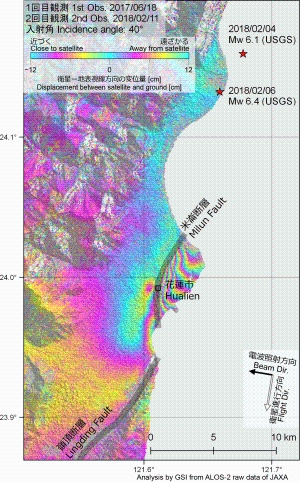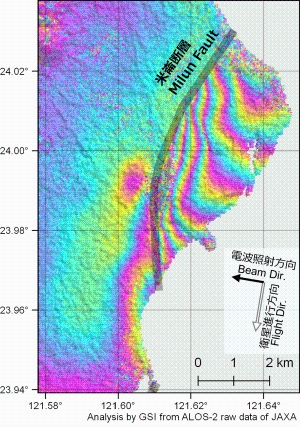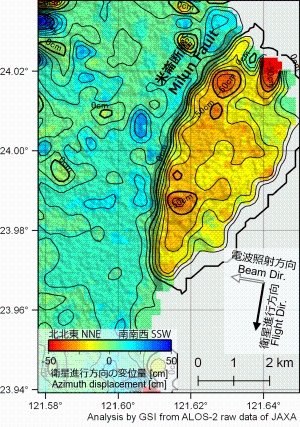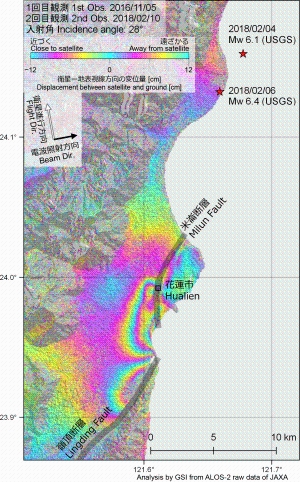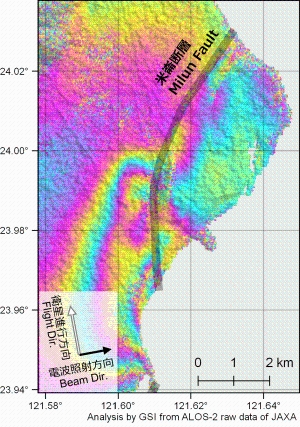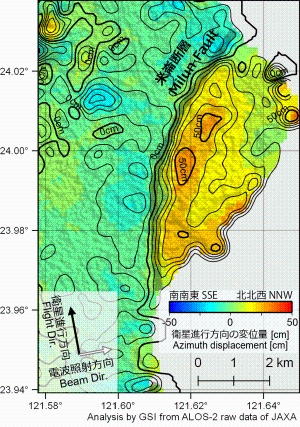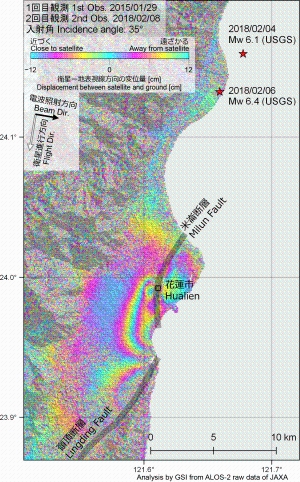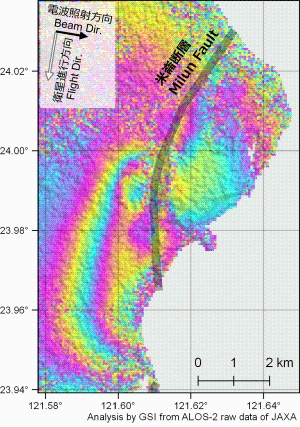The 2018 Hualien (Taiwan) Earthquake: Crustal deformation detected by ALOS-2 data
Crustal Deformation Observed by Synthetic Aperture Radar (SAR)Released: Feb. 9, 2018, updated: Feb. 16, 2018, Japanese version of this page
SummaryA large earthquake (Mw 6.4, USGS) occurred around Hualien in Taiwan on February 6, 2018. Serious damage such as building collapse and many deaths has been reported. To measure the crustal deformation caused by the earthquake, we analyzed ALOS-2/PALSAR-2 data.
The results obtained from the data are summarized as follows.
3D and 2.5D displacement(a) [PNG: 1.2MB] (b) [PNG: 816KB] Fig. 1. 3D displacement derived from Figs. 3(b)(c) and 4(b)(c), (a) overview, (b) around Hualien city*. (a) [PNG: 1.6MB] (b) [PNG: 1.8MB] Fig. 2. Displacement of (a) quasi vertical and (b) quasi EW components, derived from Figs. 3(a) and 4(a)*. Results of InSAR and Pixel Offset(a) [PNG: 3.8MB] (b) [PNG: 934KB] (c) [PNG: 939KB] Fig. 3. Descending/Right (a) InSAR (overview), (b) InSAR (zoom), (c) azimuth offset (Pixel Offset method). (a) [PNG: 3.8MB] (b) [PNG: 925KB] (c) [PNG: 946KB] Fig. 4. Ascending/Right (a) InSAR (overview), (b) InSAR (zoom), (c) azimuth offset (Pixel Offset method). (a) [PNG: 2.8MB] (b) [PNG: 729KB] Fig. 5. Descending/Left InSAR (a) overview, (b) zoom.
*1 F: Fine [10m], H: High Sensitive [6m], U: Ultrafine [3m], W: ScanSAR (Normal) (cf. ALOS-2 Project / PALSAR-2 (JAXA)) 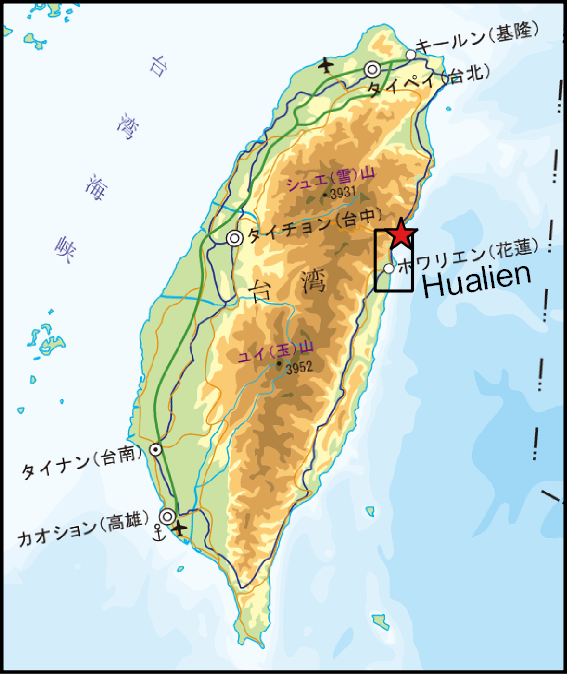 Area of interest Analysis by GSI from ALOS-2 raw data of JAXA. These results were obtained through the activity of the SAR analysis working group of the Coordinating Committee for Earthquake Prediction. The 2018 Hualien (Taiwan) Earthquake
SatelliteALOS-2 (Advanced Land Observing Satellite 2) launched by Japan Aerospace Exploration Agency on May 24, 2014
Copyrights and CreditsCopyright. Geospatial Information Authority of Japan. ALL RIGHTS RESERVED.
We welcome links from your website to this website. When using materials on this website, we ask that proper credit be given. ContactYARAI Hiroshi : Head of Division
KOBAYASHI Tomokazu : Chief Researcher MORISHITA Yu : Chief Researcher 
|


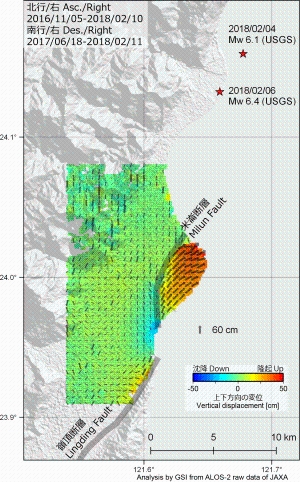
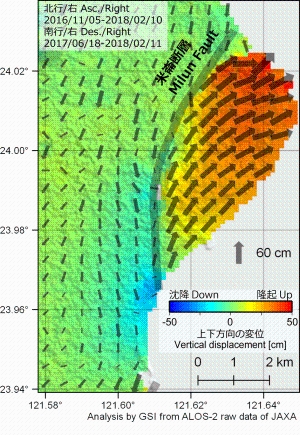
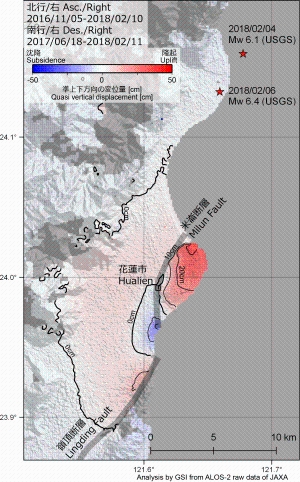
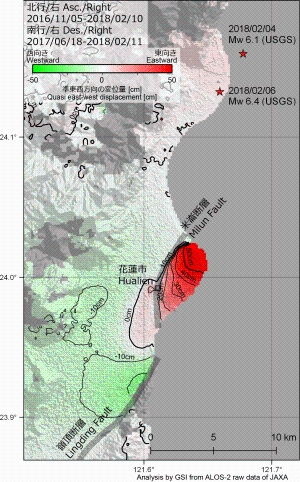
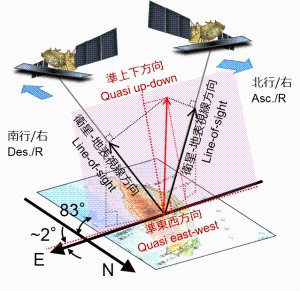 Geometry of 2.5-D analysis
Geometry of 2.5-D analysis